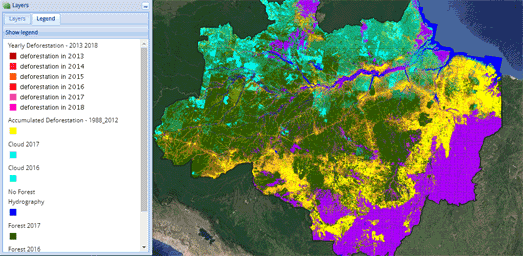Сообщения
Сообщения за ноябрь, 2018
L'Eau de Pesticide
- Получить ссылку
- X
- Электронная почта
- Другие приложения
Mapping UK Pub Closures
- Получить ссылку
- X
- Электронная почта
- Другие приложения
Drone Panoramas of Camp Fire
- Получить ссылку
- X
- Электронная почта
- Другие приложения
New York's Music Map
- Получить ссылку
- X
- Электронная почта
- Другие приложения
A Toponym Map of Berwickshire
- Получить ссылку
- X
- Электронная почта
- Другие приложения
The Medieval Murder Map of London
- Получить ссылку
- X
- Электронная почта
- Другие приложения
Send Street View Christmas Cards
- Получить ссылку
- X
- Электронная почта
- Другие приложения
Where on Mars
- Получить ссылку
- X
- Электронная почта
- Другие приложения
The Map of Scientific Collaboration
- Получить ссылку
- X
- Электронная почта
- Другие приложения
The Destruction of the Amazon Rainforest
- Получить ссылку
- X
- Электронная почта
- Другие приложения
Building a Bike Friendly Berlin
- Получить ссылку
- X
- Электронная почта
- Другие приложения
Black Friday Cyber Monday Live Shopping
- Получить ссылку
- X
- Электронная почта
- Другие приложения
Mapping the Rise of Populism
- Получить ссылку
- X
- Электронная почта
- Другие приложения
A Short History of Industry in Latvia
- Получить ссылку
- X
- Электронная почта
- Другие приложения
Drowning Cities
- Получить ссылку
- X
- Электронная почта
- Другие приложения
Putting Sikh Soldiers on the Map
- Получить ссылку
- X
- Электронная почта
- Другие приложения
Mapping Sustainable Forestry Projects
- Получить ссылку
- X
- Электронная почта
- Другие приложения
How Green is Your City?
- Получить ссылку
- X
- Электронная почта
- Другие приложения
Mapping Poverty in Victoria, Australia
- Получить ссылку
- X
- Электронная почта
- Другие приложения
Mapping Every Homicide in Toronto
- Получить ссылку
- X
- Электронная почта
- Другие приложения
Exploring Fictional London
- Получить ссылку
- X
- Электронная почта
- Другие приложения
California Air Pollution & Smoke Maps
- Получить ссылку
- X
- Электронная почта
- Другие приложения
How Big Are California's Fires?
- Получить ссылку
- X
- Электронная почта
- Другие приложения
3D Zurich
- Получить ссылку
- X
- Электронная почта
- Другие приложения
Drowning American Homes
- Получить ссылку
- X
- Электронная почта
- Другие приложения
Preventable Health Risks in the USA
- Получить ссылку
- X
- Электронная почта
- Другие приложения
California Wildfire Damage Map
- Получить ссылку
- X
- Электронная почта
- Другие приложения
This Warming Planet
- Получить ссылку
- X
- Электронная почта
- Другие приложения
Shadow Mapping
- Получить ссылку
- X
- Электронная почта
- Другие приложения
Mapping California's Wildfires
- Получить ссылку
- X
- Электронная почта
- Другие приложения
The Map of Meaning
- Получить ссылку
- X
- Электронная почта
- Другие приложения
Mapping the Norse World
- Получить ссылку
- X
- Электронная почта
- Другие приложения
Mapping the Fallen of World War I
- Получить ссылку
- X
- Электронная почта
- Другие приложения
California Wildfire Maps
- Получить ссылку
- X
- Электронная почта
- Другие приложения

































